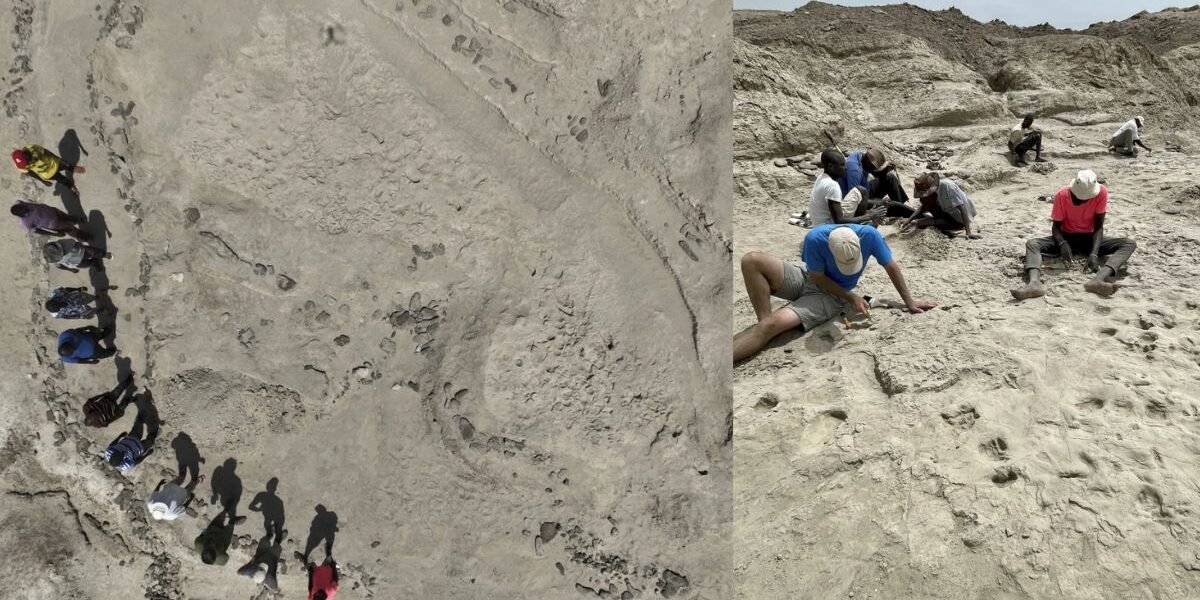Muddy footprints left on a muddy lakeshore in northern Kenya suggest two of our early human ancestors – Homo erectus and Paranthropus boisei – lived about 1.5 million years ago. Intersecting trackways alongside the footprints of antelopes, horses, warthogs, giant storks, and other animals were found.
These tracks turned into fossils that scientists have now discovered at a location called Koobi Fora, providing the first evidence that these two species shared the same landscape, literally crossing paths.
The footprints were left in the mud by two different species “within a matter of hours, or at most days,” said paleontologist Louise Leakey, co-author of the research published Thursday in the journal Science.
Scientists previously knew from fossil remains that these two extinct branches of the human evolutionary tree lived about the same time in the Turkana Basin. But dating fossils is not exact.
“It’s plus or minus a few thousand years,” said paleontologist William Harcourt-Smith of Lehman College and the American Museum of Natural History in New York, who was not involved in the study. Yet with fossil footprints, “there’s an actual moment in time preserved,” he said.
The tracks of fossil footprints were uncovered in 2021 in what is today Koobi Fora, Kenya, said Leaky, who is based at New York’s Stony Brook University.
Whether the two individuals passed by the eastern side of Lake Turkana at the same time – or a day or two apart – they likely knew of each other’s existence, said study co-author Kevin Hatala, a paleoanthropologist at Chatham University in Pittsburgh.
“They probably saw each other, probably knew each other was there, and probably influenced each other in some way,” he said.
Among other details, the footprints suggest more mobility in their big toe, compared to H. erectus or modern humans, said Hatala. Our common primate ancestors probably had hands and feet adapted for grasping branches, but over time the feet of human ancestors evolved to enable walking upright, researchers say.















